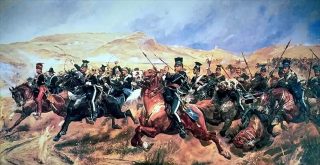Edward O. Thorp is not well-known outside of finance, but within the investment community he is revered like a rock star. Over two decades, Thorp recorded average annual returns of 19.1%, an incredible achievement. In his recent memoir, A Man for All Markets, Thorp tells his amazing life story, from a child of the depression through an early career as an academic and finally as a successful investor.
Independent Thinking
Early on Thorp developed a fiercely independent mind that guided his thinking throughout his career. Thorp relates this story from his early childhood:
“A trait that showed up at about this time was my tendency not to accept anything I was told until I had checked it for myself. This had consequences. When I was three, my mother told me not to touch the hot stove because it would burn me. I brought my finger close enough to feel the warmth, then pressed the stove with my hand. Burned. Never again.”
This trait of independent thinking showed up again in high school when he was introduced to science. For Thorp science was very hands on, and he took it as a personal challenge to verify for himself as much as he could:
“Pranks and experiments were part of learning science my way. As I came to understand the theory, I tested it by doing experiments, many of which were fun things I invented. I was learning to work things out for myself, not limited by prompting from teachers, parents, or the school curriculum. I relished the power of pure thought combined with the logic and predictability of science. I loved visualizing an idea and then making it happen.”
Taking on Vegas
This kind of mindset empowered Thorp to take on challenges most people would dismiss as impossible or not worth their time. While studying mathematics in graduate school, Thorp became curious about gambling and the prospect of beating the casinos at their own game. With his knowledge of physics, he suspected he could devise a system that would accurately predict where a ball would land on a roulette wheel. As he asked around, the consensus view was that it is impossible to beat the house. One memorable evening Thorp was at a dinner party with Richard Feynman, the famous physicist, who was then a thirty-eight year old professor at CalTech:
If anyone knew if physical prediction at roulette was possible it should be Richard Feynman. I asked him, “Is there any way to beat the game of roulette?” When he said there wasn’t, I was relieved and encouraged. This suggested that no one had yet worked out what I believed was possible. With this incentive, I began a series of experiments.
Thorp, along with fellow MIT professor Claude Shannon, went on to invent the world’s first wearable computer. He worked out an ingenious system and timing device that included a switch activated by tapping his toe, and a tiny speaker embedded near his ear. The speaker would inform him, though different tones, where on the roulette board the odds were in his favor.
Thorp also turned his attention to blackjack. Once again dismissing the conventional wisdom, he set out to create a system of counting cards, that would inform him when odds tipped in his favor and he could place larger bets. His system was successful, and he turned it into a book, Beat the Dealer, that sold over a million copies.
The Greatest Casino on Earth
With royalty money from the book, and additional winnings from his time playing blackjack in the casinos, Thorp, for the first time in his life, had excess capital to invest. He decided to take his skills to the greatest casino on earth – Wall Street. After a few early mistakes (remember the burned hand from the stove?), he set out to learn for himself everything he could about investing. It was this ability to build up knowledge first-hand, and to never accept theory until he verified it himself, that really set Thorp apart.
Around this time, Thorp became very interested in the market for options. He believed this market to be inefficient – that is he predicted that the price of some options were widely different from their intrinsic value. If he was going to make money trading options, he needed a model that would accurately value an option. Since no such model existed, he decided to develop one himself. What Thorp discovered was a formula to accurately value options. He used the formula to generate extraordinary returns for himself and his partners. A few years later, two academics, Fischer Black and Myron Scholes, would independently develop the same formula, and would be awarded the Nobel Prize in economics for the discovery.
Success is not about Money
In the late 1980s, after two decades of successful investing, Thorp had more than enough money and he decided to retire from managing money for other people. Instead, he used his time to study, travel, and spend time with family and friends. To explain this decision, Thorp relates the following story:
Joseph Heller and Kurt Vonnegut were at a party given by a billionaire when Vonnegut asked Heller how it felt to know that their host might have made more money in one day than Heller’s Catch-22 since it was written. Heller said he had something the rich man can never have. When puzzled, Vonnegut asked what that could be, Heller answered, “The knowledge that I’ve got enough.”
It took real wisdom to make this decision. As Thorp explains, “Success on Wall Street was getting the most money. Success for us [Thorp and his wife Vivian] was having the best life.”
I found Thorp’s book to be both enlightening and entertaining.
Sean P. Murray is an author, speaker and consultant in the areas of leadership development and talent management.
Twitter: @seanpmurray111
Image Source: Blackjack by banspy. Licensed under CC BY 2.0


